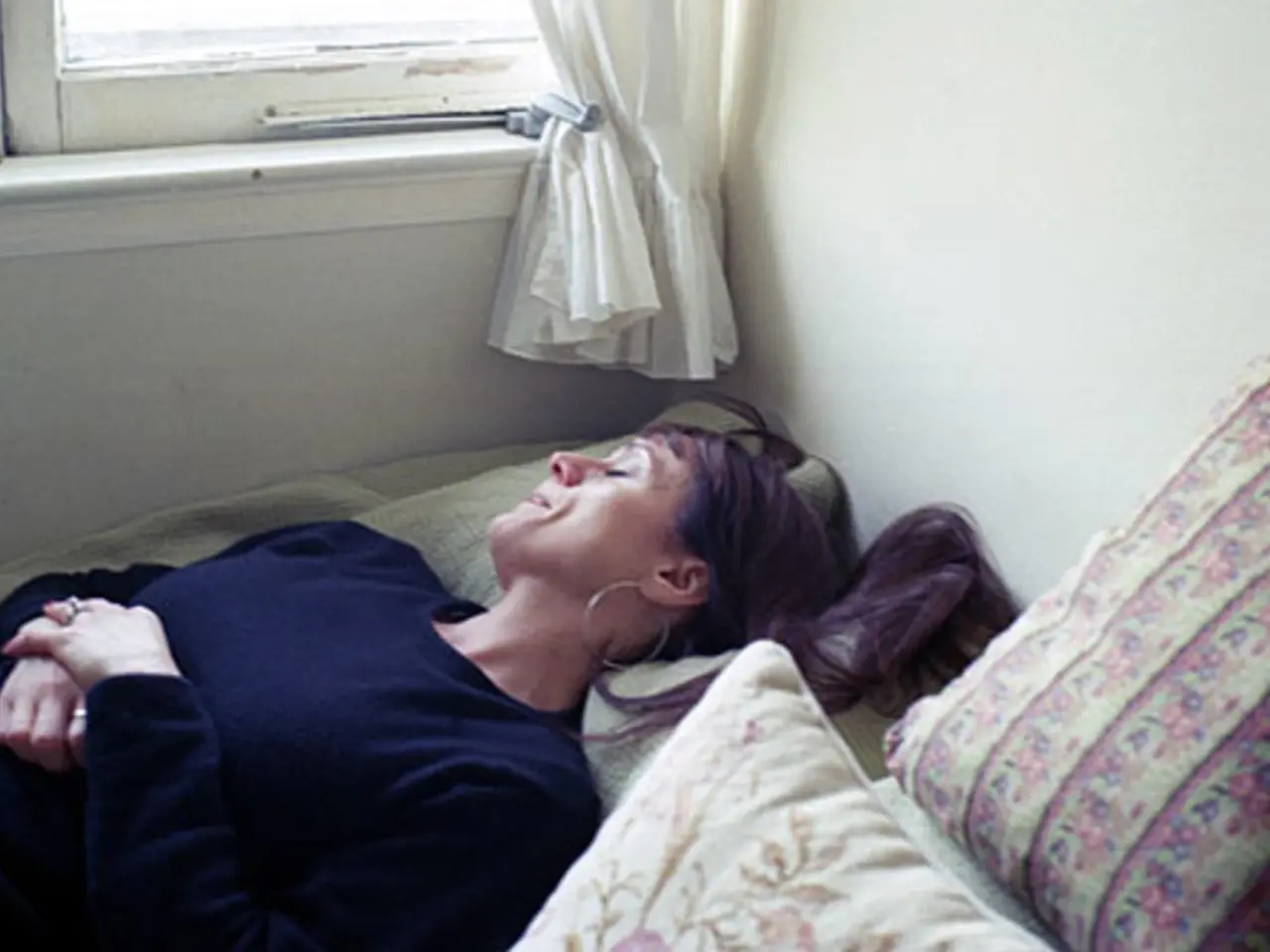Optimal sleeping postures for alleviating lower back discomfort
For individuals grappling with lower back pain, finding a comfortable and supportive sleep position can significantly enhance sleep quality. Here are some recommendations to help alleviate discomfort and promote restful sleep.
## Recommended Sleeping Positions
1. **Back Sleeping with Leg Elevation**: Sleeping on your back with a pillow under your knees can help maintain spinal alignment and reduce pressure on the lower back [3][4][5]. This position allows the natural curvature of the lumbar spine to be maintained, reducing pressure on the hips and lower back.
2. **Fetal Position**: Sleeping on your side in a fetal position can be beneficial, especially for those with spinal stenosis. To keep the spine aligned, place a pillow between your knees [1][2].
3. **Reclining Position**: For severe cases, using an adjustable bed or recliner can help elevate the head and knees, reducing pressure on the sciatic nerve and lower back [1]. This position may provide relief for individuals with lower back pain.
## Choosing the Right Pillows
- **Back Sleepers**: A pillow that supports the natural curve of your neck is ideal. Ensure your head is not pushed too far forward or backward [3][4]. Additional arm support with small pillows can reduce strain on the arms and shoulders.
- **Side Sleepers**: Choose a pillow that supports your neck and keeps your spine aligned. A pillow between your knees can prevent the spine from twisting [2][3].
## Choosing the Right Mattress
- **Supportive Mattress**: Opt for a mattress that provides adequate support for your spine, keeping it in alignment and reducing pressure on sensitive areas. A medium-firm mattress is often recommended for back pain relief [2].
- **Adjustable Bed**: Consider using an adjustable bed to customize the position of your head and knees, which can help relieve pressure on the lower back [1].
By following these guidelines, you can improve your sleep quality and alleviate lower back pain. It's important to remember that body shape and size can determine the level of support a mattress should have. For example, a person with wider hips may be better suited to a softer mattress, while a person with narrower hips may need a firmer one.
Additional tips include placing a pillow or a rolled-up towel under the forehead for individuals who lie face down, and using a slim pillow beneath the abdomen and hips when sleeping on the front to help improve spinal alignment.
For individuals who find relief in a reclined chair position, investing in an adjustable bed that can be positioned in the same way may be beneficial. Lastly, sleeping in the fetal position can help individuals with a herniated disk as it reduces bending of the spine and helps open up the joints.
- Choosing a supportive mattress with a medium firmness can help maintain spinal alignment for individuals dealing with lower back pain, contributing to improved sleep quality.
- Utilizing a pillow under the knees while sleeping on the back can alleviate pressure on the lower back, promoting a healthier sleep and overall wellbeing.
- The fetal position, when appropriately supported by a pillow between knees, can benefit side sleepers who suffer from spinal stenosis or lower back pain. This position can help maintain spinal alignment, potentially improving sleep and mental health.
- By using science-backed solutions such as adjustable beds, recliners, and the correct choice of pillows, individuals can enhance their sleep positions to reduce pain and discomfort associated with lower back pain.
- Embracing the health-and-wellness aspect of proper sleep positing involves considering various factors, such as body size, shape, and specific health conditions, like herniated disks, to optimize sleep positions for comfort and pain relief.




